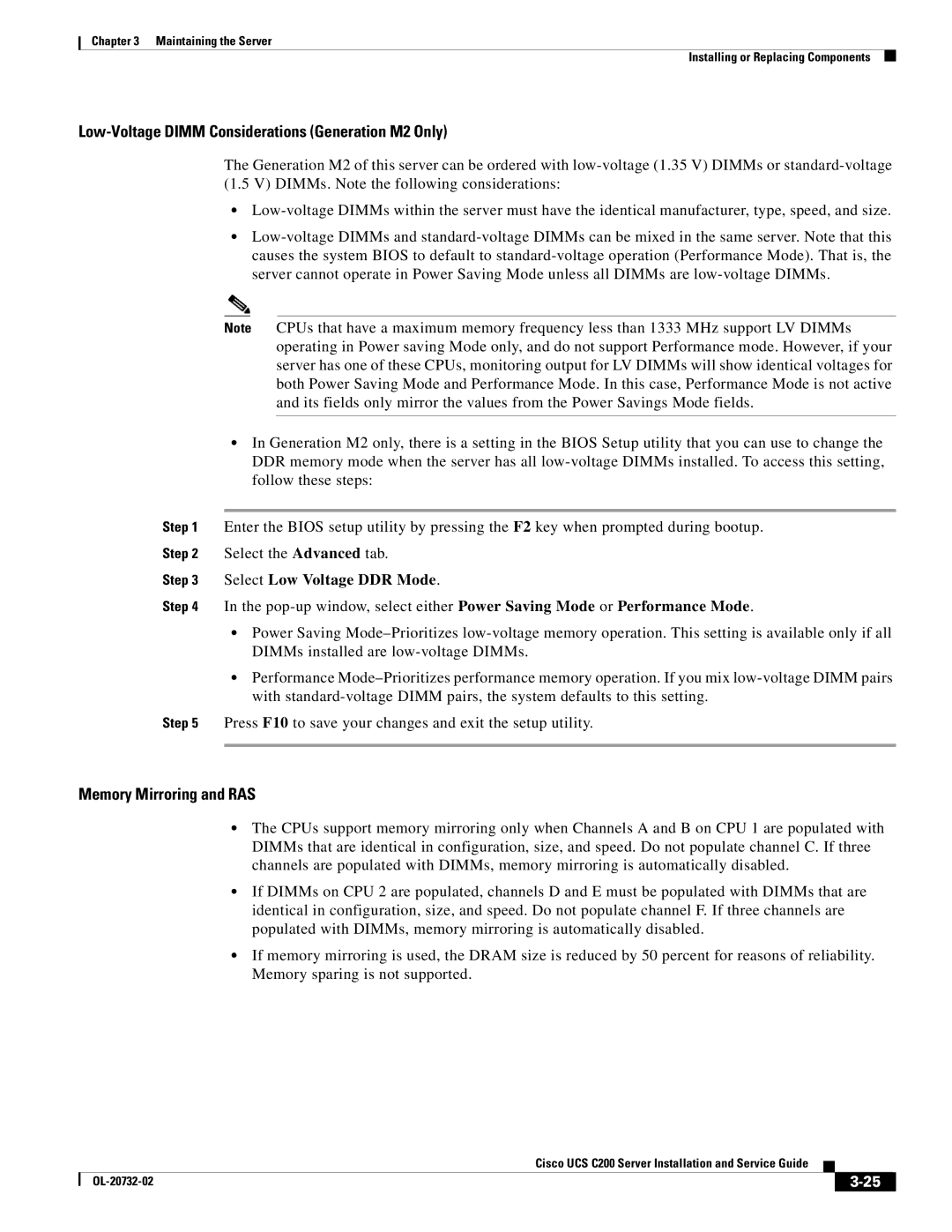
Chapter 3 Maintaining the Server
Installing or Replacing Components
Low-Voltage DIMM Considerations (Generation M2 Only)
The Generation M2 of this server can be ordered with
(1.5 V) DIMMs. Note the following considerations:
•
•
Note CPUs that have a maximum memory frequency less than 1333 MHz support LV DIMMs operating in Power saving Mode only, and do not support Performance mode. However, if your server has one of these CPUs, monitoring output for LV DIMMs will show identical voltages for both Power Saving Mode and Performance Mode. In this case, Performance Mode is not active and its fields only mirror the values from the Power Savings Mode fields.
•In Generation M2 only, there is a setting in the BIOS Setup utility that you can use to change the DDR memory mode when the server has all
Step 1 Enter the BIOS setup utility by pressing the F2 key when prompted during bootup.
Step 2 Select the Advanced tab.
Step 3 Select Low Voltage DDR Mode.
Step 4 In the
•Power Saving
•Performance
Step 5 Press F10 to save your changes and exit the setup utility.
Memory Mirroring and RAS
•The CPUs support memory mirroring only when Channels A and B on CPU 1 are populated with DIMMs that are identical in configuration, size, and speed. Do not populate channel C. If three channels are populated with DIMMs, memory mirroring is automatically disabled.
•If DIMMs on CPU 2 are populated, channels D and E must be populated with DIMMs that are identical in configuration, size, and speed. Do not populate channel F. If three channels are populated with DIMMs, memory mirroring is automatically disabled.
•If memory mirroring is used, the DRAM size is reduced by 50 percent for reasons of reliability. Memory sparing is not supported.
|
| Cisco UCS C200 Server Installation and Service Guide |
|
| |
|
|
| |||
|
|
|
| ||
|
|
|
| ||
